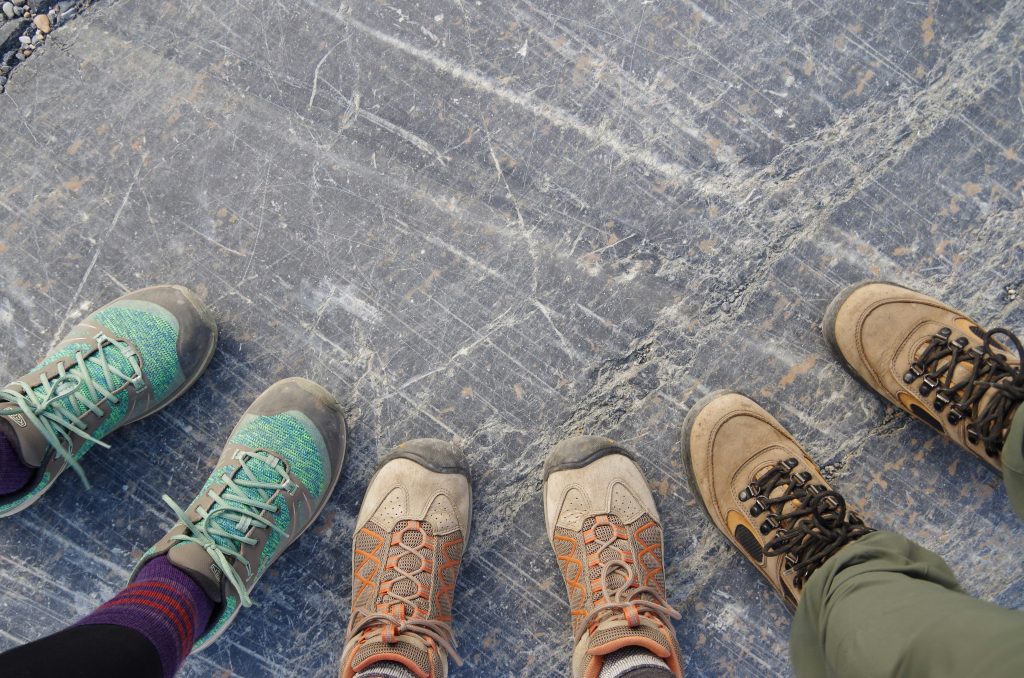Winter transforms a familiar trail into a new adventure, but it also demands a higher level of preparedness. Your standard hiking shoes won’t suffice when faced with snow, ice, and freezing temperatures. The right pair of winter hiking boots is your first line of defense, keeping your feet warm, dry, and stable on slippery terrain.
This guide will walk you through the essential features to look for in a winter boot and reviews three of the top-rated options for 2025 to ensure your cold-weather hikes are safe and enjoyable.

What Makes a Boot a “Winter Hiking Boot”?
Winter hiking boots are engineered specifically for cold, wet, and unstable conditions. They go beyond the capabilities of a 3-season boot by integrating three core principles:
- Advanced Waterproofing: To keep melting snow and slush from seeping in.
- Insulation: To retain heat and protect against frostbite.
- Aggressive Traction: To grip securely on snow, ice, and mud.
Key Features to Look for in a Winter Hiking Boot
1. Waterproofing and Breathability
A wet foot loses heat 25x faster than a dry one, making waterproofing non-negotiable.
- Membranes: Look for boots featuring established technologies like Gore-Tex or similar proprietary membranes. These create a barrier that blocks external water while allowing internal sweat vapor to escape, preventing that “plastic bag” effect.
- Sealed Seams: Critically, the boot’s seams should be fully sealed to prevent water from entering through stitch holes.
2. Insulation and Warmth Ratings
The right amount of insulation depends on your activity level and the climate.
- 200g Insulation: Ideal for active hikers in moderately cold conditions (e.g., 20°F to 40°F / -7°C to 4°C). It provides warmth without excessive bulk or overheating.
- 400g Insulation and Above: Best for less strenuous activity or very cold temperatures (e.g., below 20°F / -7°C). It offers maximum warmth but can be too warm for high-exertion hikes.
3. Traction and Outsole Design
The sole is your connection to the ground. On ice and snow, it’s everything.
- Lug Depth: Look for deep, multi-directional lugs (the cleats on the sole) that can bite into soft snow and shed mud effectively.
- Rubber Compound: A high-quality, sticky rubber (like Vibram) provides better grip on wet rocks and icy surfaces.
- Ice Grip: For frequent ice hiking, consider boots that are compatible with microspikes or have built-in ice-traction lugs.
4. Fit and Support
A proper fit is crucial for comfort and safety.
- Size Up: You will likely be wearing thicker winter socks. It’s often recommended to try boots on half a size to a full size larger than your regular shoe size.
- Ankle Support: A higher cut provides valuable ankle support on uneven, snow-covered trails.
- Toe Box: Ensure there’s enough room to wiggle your toes to promote circulation, which is essential for keeping feet warm.

Top 2025 Winter Hiking Boot Picks from Amazon
Based on in-depth analysis of user reviews and technical specs, here are three exceptional winter hiking boots for different needs and budgets.
1. Salomon Quest Winter CS WP Boots
A high-performance, all-terrain boot for serious hikers facing demanding winter conditions.
- 👍 Pros:
- Exceptional Traction: The Contagrip® outsole is consistently praised for its tenacious grip on snow, ice, and wet rocks, providing immense confidence on tricky terrain .
- All-Weather Protection: The Gore-Tex membrane and sealed construction reliably keep feet dry, while the 200g insulation offers perfect warmth for active hikers .
- Superb Ankle Support: The higher cut and secure fit provide excellent stability and protection on uneven trails, a favorite feature among avid hikers .
- 👎 Cons:
- Higher Price Point: This is a premium boot with a price to match, representing a significant investment .
- Break-in Period: Some users note a short break-in period is required for the boots to feel completely flexible and comfortable .
> > Check the Salomon Quest Winter Boots on Amazon
2. Oboz Bridger Insulated Waterproof Boots
A durable, incredibly supportive, and warm boot built for cold-weather endurance.
- 👍 Pros:
- Robust Warmth & Protection: With a substantial build, heavyweight insulation (400g), and a full-grain leather upper, these boots are built for serious cold and are often described as “fortresses for your feet” .
- Superior Support & Durability: The O Fit Insole™ and strong midsole provide exceptional arch support and all-day comfort on long hikes. The materials are built to last for seasons .
- Great Traction: The Winter-specific outsole with deep lugs performs very well in snow and on slippery surfaces .
- 👎 Cons:
- Stiff and Heavy: The trade-off for maximum support and durability is a stiffer feel and heavier weight, which some find less nimble .
- Runs Narrow: Several reviewers with wider feet mention they run narrow, so consider ordering a wide size if available .
> > Check the Oboz Bridger Insulated Boots on Amazon
3. Merrell Thermo Rove 4 Waterproof Boots
A versatile and comfortable boot that seamlessly transitions from the trail to town.
- 👍 Pros:
- Out-of-Box Comfort: Merrell’s famous comfort is a standout feature. Many users report they require zero break-in time and feel great from the first wear .
- Lightweight & Agile: Compared to bulkier winter boots, the Thermo Rove 4 is relatively light and flexible, making it ideal for less technical trails and everyday winter wear .
- Reliable Waterproofing: The M Select™ DRY membrane effectively keeps out water from puddles and melting snow, as confirmed by numerous positive reviews .
- 👎 Cons:
- Less Ankle Support: The mid-height cut offers less ankle support than higher-cut models like the Salomon or Oboz, which may not be ideal for rough, off-trail terrain .
- Best for Moderate Use: The warmth and traction are excellent for packed snow and light trails, but may be pushed to their limits in deep snow or on sheer ice without additional traction devices .